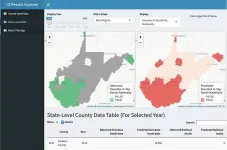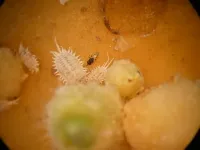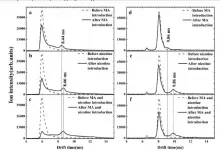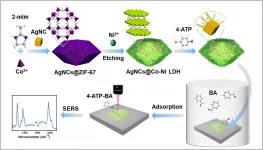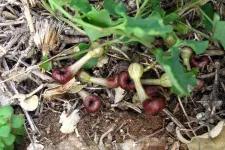(Press-News.org) For two decades, the number of Americans who die each year from drug overdoses has steadily risen, from less than 20,000 in 1999 to more than 80,000 in 2020. By studying patterns of these drug-related fatalities, researchers at University of California San Diego School of Medicine, San Diego State University (SDSU), and international collaborators have designed and validated a prediction model to signal counties at risk of future overdose death outbreaks. The goal of the open-source tool is to predict and prevent deaths through early deployment of public health resources.
Findings were published June 9, 2021 by Lancet Public Health.
"A big challenge for public health experts is figuring out which parts of the country are at greatest risk of future overdose outbreaks. If we can predict where such outbreaks may happen, then we will be empowered to intervene and stop deaths from occurring," said senior author Annick Borquez, PhD, an epidemiologist and assistant professor in the Division of Infectious Disease and Global Public Health at UC San Diego School of Medicine.
The opioid epidemic has been described as an overlapping triple wave of fatal overdoses due to prescription opioids, heroin and highly potent synthetic opioids, including fentanyl. The investigators used this third wave to investigate whether a tool could be developed to predict and prevent deaths.
"This study provides a novel, rigorously validated tool to inform policy planning in the context of overdose epidemics driven by emerging drugs and sets a new standard for the development of a data-driven response to drug use epidemics," said first author Charlie Marks, MPH, graduate research assistant, SDSU-UC San Diego joint doctoral program in Interdisciplinary Research in Substance Abuse.
Using CDC data from 2013 (when the fentanyl epidemic began) up to 2018 (the most recent data available at the time), the research team designed and trained a retrospective statistical model to find patterns in the relationship between county characteristics and overdose deaths, then used the data to predict fatality rates in the next year. The predictions were then compared with actual overdose death rates in each county.
"We found that our approach brought substantial improvement to predicting counties with high fatal overdose rates compared to a simple benchmark that relied on past year rates alone. We also found that increased overdoses in a neighboring county are very predictive of future overdoses in a given county, indicating that the overdose epidemic spreads geographically," said Marks.
The team developed the OD Predict Explorer web tool, a publicly available interface where results of the time-limited model are presented and available for research purposes. Users can click on a map and compare what the model predicted from 2013 to 2018 versus what was observed and determine whether the tool actually identified the counties with the highest overdose across the country, including those experiencing new spikes.
"Many of the counties with the most deaths were concentrated in the Midwest and Northeast, where the fentanyl epidemic has hit hardest, but an increasing number of states in the West are affected as well. There's this idea that this epidemic has been focused in rural areas where the prescription opioid epidemic started, but the reality is overdose deaths have been increasing in cities too. For example, San Francisco and San Diego have seen steep increases in fentanyl overdose deaths in the past year," Borquez added.
Borquez and Marks note that that all predictive models are limited by the data sets used to inform them and said more timely and available information related to deaths, drug markets and seizures and prescription data at both county and state levels, is urgently needed.
"While our approach can be effective, it also requires that fatal overdose data from all the counties in the U.S. be accessible and available for the current year, which unfortunately is not yet standard practice," said Borquez. "Our model will only be useful in predicting and preventing deaths if there is no lag in getting data from local and national agencies."
"Further model refinement and securing access to restricted data through broad collaborations will be next steps to improve model performance. Imagine if we could develop predictive tools for substance use epidemics, similar to what was developed to predict COVID-19 infections and deaths."
Borquez predicted it would be one to two years before the tool is sufficiently refined to make real-time predictions at a national level based on available data, but that a promising avenue in the short term will involve applying it in states that share recent overdose death information.
"We urgently need methods to predict where these overdoses and other outbreaks may occur. Outbreaks such as hepatitis and HIV are also connected to drug use, and can be prevented too," said Borquez. "Investing in drug use surveillance and harm-reduction infrastructure doesn't solve one problem, it solves multiple problems at once."
INFORMATION:
Co-authors included: Daniela Abramovitz, Gabriel Carrasco-Escobar, Rocío Carrasco-Hernández, Natasha Martin, Steffanie Strathdee, and Davey Smith from UC San Diego; Christl A Donnelly from University of Oxford, Daniel Ciccarone from UCSF, and Arturo González-Izquierdo from University College London.
WASHINGTON -- In a new study, researchers show that the fiber optic cables that carry data across the world's oceans can also be used to sense geophysical events and monitor ocean and seafloor conditions.
Although buoys and cabled observatories can be used to monitor parts of the ocean, the information they provide is limited to their immediate surroundings. The new approach could offer a way to use the global network of subsea fiber optic cables to study otherwise inaccessible parts of the ocean.
"Once perfected, this new technique will allow geophysical sensing in the ocean depths, which are largely unexplored because of a lack of instrumentation that works in this environment," said Zhongwen Zhan, assistant professor of geophysics at Caltech. ...
A CABI-led study has revealed that the success of Classical Biological Control (CBC) in Europe, North Africa and the Middle East is only rarely dependent on the released biological control agent, but more often on other factors, such as the target pest, its host plant, or the circumstances of the releases.
The research - published in the journal NeoBiota - suggests that the overall success of biological control introductions of insect predators and parasitoids against herbivorous insects in the Western Paleartic ecozone is comparable to the success of CBC worldwide. However, over 100 years of CBC in this region, has resulted in no overall rise in success in the fight against insect pests - including those of crops such as citrus, olive, potato, ...
The COVID-19 pandemic has made clear the importance of understanding precisely how diseases spread throughout networks of transportation. However, rigorously determining the connection between disease risk and changing networks--which either humans or the environment may alter--is challenging due to the complexity of these systems. In a paper publishing on Thursday in the END ...
Quantum coherence is a key ingredient in many fundamental tests and applications of quantum technology including quantum communication, imaging, computing, sensing and metrology. However, the transfer of quantum coherence in free-space has so far been limited to direct line-of-sight channels as atmospheric turbulence and scattering degrade the quality of coherence severely.
In a new paper published in Light: Science & Applications, researchers from the University of Waterloo have successfully demonstrated the transfer and recovery of quantum coherence using photons scattered in free-space ...
Recently, a research group led by CHU Yannan and HUANG Chaoqun from the Institute of Health & Medical Technology of the Hefei Institutes of Physical Science (HFIPS) developed an effective method for on-site detection of methamphetamine (MA) in the presence of nicotine by a homemade ion mobility spectrometry. Relevant results were published in Analytical and Bioanalytical Chemistry.
MA is a highly addictive stimulant that affects the central nervous system. The on-site rapid detection of trace amounts of MA and screening illicit drugs in clandestine laboratories are important for drug enforcement agencies and the forensic community in general. However, detecting MA in the ...
Lack of water, floods, or crop losses: As a result of climate change, pronounced periods of drought and rainfall are occurring more frequently and more intensively all around the world, causing human suffering and major economic damage. The more precise seasonal forecasts for the coming months are, the more effectively these consequences can be mitigated. A research team from Karlsruhe Institute of Technology (KIT) has now been able to improve global forecasts using statistical methods so that they can be used on the regional level. The researchers describe the new approach and the economic benefits of ...
Prof. HUANG Qing's group from the Hefei Institutes of Physical Science (HFIPS) developed a surface-enhanced Raman spectroscopy (SERS) gas sensor to detect aldehyde with high sensitivity and selectivity, which provided a new detection method for studying the adsorption of gas molecules on porous materials. The relevant research results have been published in Analytical Chemistry.
Adsorption technology is one of the main technologies for treating Volatile organic compounds (VOCs). Over the past years, metal-organic frameworks (MOFs) have attracted high interest for their outstanding adsorption property. Closely related to MOFs, layered double hydroxides (LDHs), also known as hydrotalcite-like ...
The annual number of new HIV infections among men who have sex with men (MSM) in England is likely to have fallen dramatically, from 2,770 in 2013 to 854 in 2018, showing elimination of HIV transmission by 2030 to be within reach - suggests work by researchers from the MRC Biostatistics Unit at the University of Cambridge and Public Health England (PHE), published in The Lancet HIV.
To manage the HIV epidemic among MSM in England, enhanced testing and earlier treatment strategies were scaled-up between 2011 and 2015 and supplemented from 2015 by pre-exposure prophylaxis (PrEP). The researchers examined the effect of these interventions on the number of new infections and investigated ...
Researchers have made progress towards a G7 commitment to establish safe standards for the release of antimicrobials into the environment, by developing a new framework that establishes safe thresholds.
The threat of bacteria developing resistance to antimicrobial drugs (often called antibiotics) used to treat infection is one of the greatest global health challenges, potentially resulting in 10 million deaths per year by 2050.
A major issue is the spread of antimicrobials and resistant bacteria through water systems. When we take antibiotics, 70 per cent passes through our bodies into wastewater. Farm animals are treated with antibiotics which ...
Plants use numerous mechanisms for their pollination. Now botanists have discovered a particularly sophisticated system among pipevines that is based purely on deception.
The flowers of the Greek plant Aristolochia microstoma emit a foul, musty scent that seems to mimic the smell of decaying insects. The fly pollinators from the genus Megaselia likely get attracted to this odor while searching for arthropod corpses to potentially mate over and lay their eggs. Then, when entering the tube of an Aristolochia flower, the flies are guided by downward-pointing hairs into a small chamber, which holds the female and male floral organs. Trapped inside, they deposit pollen they carry onto the stigma, before the stamens ripen and ...
